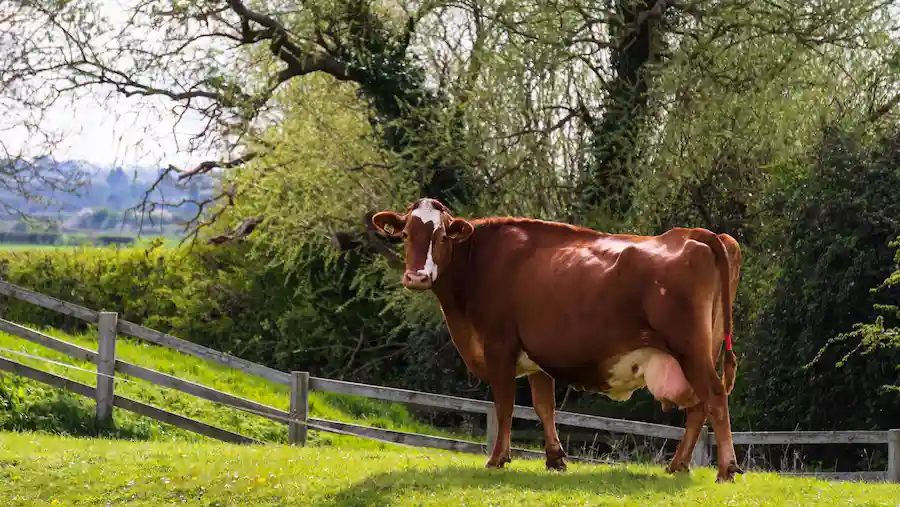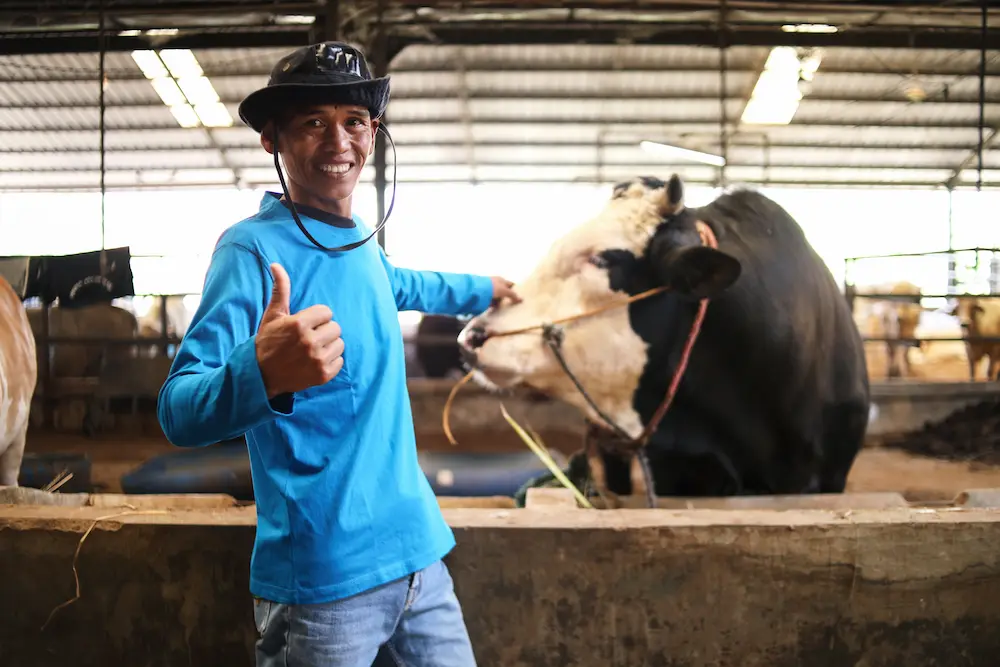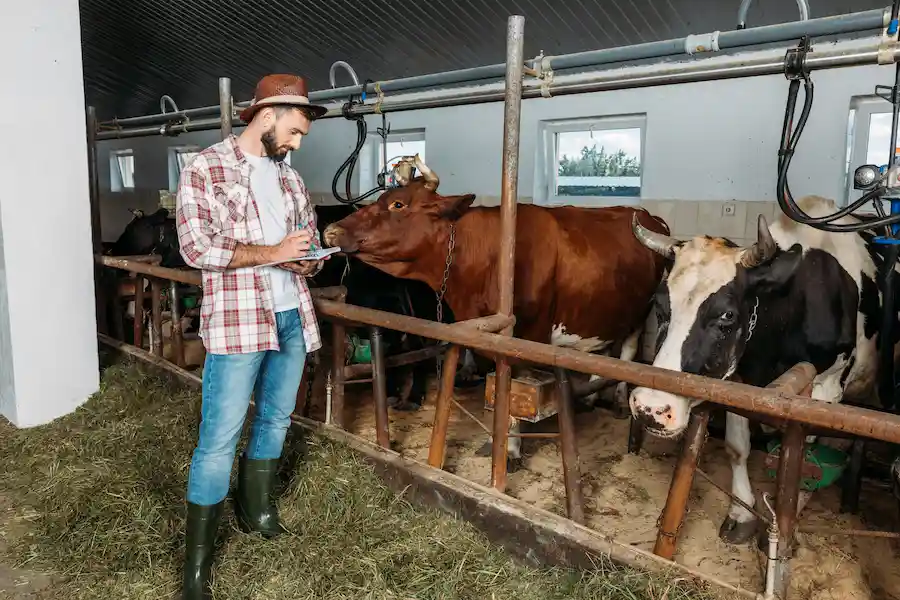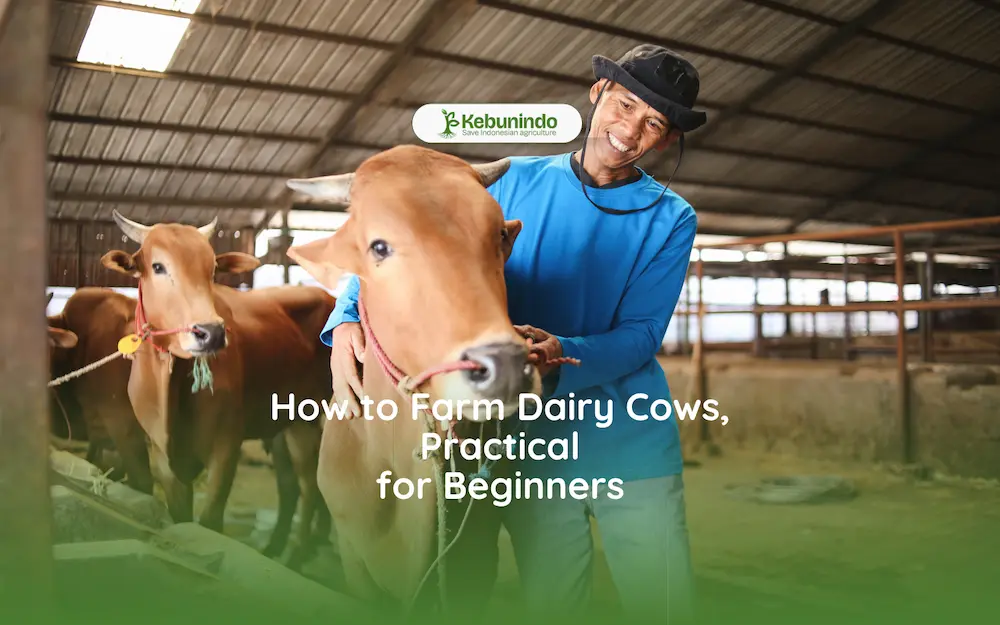Dairy cows are a type of livestock specifically bred to produce large quantities of milk. Dairy farming is a promising business, given the increasing national consumption of milk.
This article will discuss essential steps in dairy farming, from selecting superior dairy cow breeds to proper care and milk production management to produce high-quality fresh milk.
1. Understanding Dairy Cow Breeds
Dairy cows come in various breeds developed specifically for high milk production. Choosing the right breed depends on the intended use, whether for fresh milk or processed dairy products.
Factors such as climate suitability, feed availability, milk production levels, and disease resistance also play a crucial role in maintaining productive dairy cows. Some popular dairy cow breeds in Indonesia include Friesian Holstein, which thrives in highlands, and Sahiwal, which adapts well to hotter climates.
a. Friesian Holstein (FH)

Originating from the Netherlands, this highly adaptable breed dominates the global dairy cow population. With its distinctive black-and-white coloration, it produces 15-20 liters of milk daily, with an annual lactation cycle yielding 4,000-6,000 liters.
b. Jersey

This breed hails from Jersey Island, England. It is smaller in size with color variations ranging from black, dark brown, light brown, yellowish-brown, to whitish brown. Jersey cows produce 5-7 liters of milk per day, reaching up to 2,200 liters at peak lactation.
c. Milking Shorthorn

Originating from England, this is one of the oldest dairy breeds with a medium-sized body. It produces around 16-21 kg of milk per day with a balanced fat-to-protein ratio, making it ideal for various dairy products.
d. Brown Swiss

This Swiss breed has a large brown body and produces 8,000-10,000 kg of milk annually. It is known for its high-protein and high-fat milk, making it suitable for cheese production. Additionally, its meat is dense and tender.
e. Guernsey

This brown-and-white cow comes from Guernsey, England. It can produce 6,000 liters of milk per year, rich in vitamin A, protein, and fat, making it a preferred choice for butter production.
f. Ayrshire

Originating from Scotland, this breed is known for its efficiency and strength in milk production. During lactation, Ayrshire cows produce an average of 8,500 kg of milk and 350 kg of butterfat, which can be used for butter, cheese, and ice cream.
g. Sahiwal

Native to India and Pakistan, the Sahiwal is considered the best tropical dairy breed, producing 7-8 liters of milk per day or around 2,300-3,000 liters during lactation. It has a reddish-brown to grayish-red coat and high heat tolerance.
2. Housing Preparation

A suitable location for a dairy farm is usually in an area over 800 meters above sea level, with temperatures around 18°C to 21°C and ideal humidity levels of 60-70%.
Temperature and humidity are critical factors in preventing heat stress in cows, which can affect milk production. The barn should have good air circulation, ample sunlight, and protection from extreme weather such as heavy rain or strong winds.
The barn should be located 10-25 meters away from residential areas to prevent odor and waste problems but should still be accessible for easy transport of feed and milk. A nearby clean water source is necessary for drinking and washing the cows. The barn should also be close to fields or grazing areas for natural feed sources.
A sloped, well-drained location is ideal to prevent waterlogging and disease outbreaks. Avoid areas near industries that may produce pollutants harmful to dairy cows.
3. Selecting Dairy Cow Stock
Selecting quality dairy cow stock is crucial for a healthy and productive farm. Genetically, dairy cows should come from superior, high-yielding parentage to pass on these traits to their offspring.
Good dairy stock should have large udders, well-developed teats (no more than four), and a strong, well-proportioned body with a shiny coat. Ideally, female dairy cows should be 1.5 years old and weigh around 300 kg, while bulls should be two years old and weigh approximately 350 kg.
4. Feeding

To produce abundant and high-quality milk, dairy cows must receive nutritious feed. Their primary diet consists of roughage, which is essential for digestion, volatile fatty acid production, milk production, chewing stimulation, and saliva secretion.
Roughage can include rice straw, corn leaves, elephant grass, king grass, and legume plants. It should be provided twice daily (morning and evening) at 10% of the cow’s body weight. For adult dairy cows, this equates to 25-40 kg of feed per day.
Since milk contains protein, dairy cows also need concentrate feed, which supplies essential nutrients and up to 70% protein. Concentrates are given three times a day as a supplement.
5. Disease Management

To prevent disease outbreaks, barn cleanliness must be maintained by regularly washing the floors, removing cow manure, and drying wet areas to prevent bacterial growth.
Cows should be bathed daily to keep their bodies clean from dirt and debris. Any sick cows should be treated immediately to prevent disease spread.
6. Breeding
For a dairy cow to produce milk, it must first be bred and become pregnant, leading to lactation after giving birth. Female cows can be bred at 15-18 months old (1.5 years).
Cows have a gestation period of 279-290 days. After calving, they can be bred again within 60-90 days. If bred too early, their reproductive organs may not fully recover, risking injury.
There are two breeding methods: natural mating and artificial insemination (AI). Natural mating is more expensive as it requires keeping a bull, while AI is commonly performed by local veterinary officers.
7. Post-Harvest Milk Processing

To ensure high-quality fresh milk, all milk storage equipment, such as milking buckets and milk cans, must be clean and dry. Clean equipment extends milk shelf life and prevents contamination.
Before milking, the cow’s udder should be cleaned with warm water. Milking can be done manually or with a machine. Manual milking methods include:
- Stripping Technique: Using the thumb and forefinger to press the teat from the base downward while massaging.
- Knevelen Technique: Bending the thumb while applying pressure.
Milk should be filtered before storing in milk cans to remove cow hair or vaseline residues. To preserve freshness, milk should be stored in a refrigerator at 4°C.
8. Milk Marketing and Distribution

Maximum profitability is achieved when farmers own at least eight dairy cows. Milk is collected from various farms at designated collection points, known as Milk Collection Centers (MCCs).
Cooperatives collect the milk at scheduled times, conduct quality testing, and determine the price per liter. The milk is then distributed to dairy processing industries (DPIs).
Through a detailed and well-managed process, high-quality fresh milk can be obtained from superior dairy cows. With proper care, milk production can be optimized, ensuring maximum returns for farmers.

